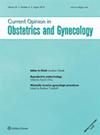卵泡冲洗在优化卵母细胞回收中的重要性。
IF 2.2
4区 医学
Q2 OBSTETRICS & GYNECOLOGY
引用次数: 0
摘要
综述的目的:批判性地评价在取卵过程中卵泡冲洗的使用。最近的发现:最近的荟萃分析评估卵泡冲洗不赞成使用单次抽吸。然而,纳入的随机对照试验(rct)在分析人群、使用的针头类型和管腔、施加的抽吸压力和进行冲洗次数方面存在显著的异质性。更重要的是,关于抽吸流量的信息很少。在单卵泡发育的妇女中,唯一一项在单次抽吸和卵泡冲洗之间采用恒定流速的随机对照试验表明,在卵泡冲洗后提取的卵母细胞数量更多。摘要:为了消除可能影响对滤泡冲洗真实效果检测的临床异质性,应在同一患者中随机进行单次抽吸和滤泡冲洗。这可以通过随机分配每个患者的卵巢进行单次抽吸或卵泡冲洗,保持两组之间相似的流量来实现。考虑到从给定数量的卵泡中获得最大数量的卵母细胞的重要性,设计适当的随机对照试验来评估卵泡冲洗是必要的。本文章由计算机程序翻译,如有差异,请以英文原文为准。
The importance of follicular flushing in optimizing oocyte retrieval.
Purpose of review To critically evaluate the use of follicular flushing during oocyte retrieval. Recent findings The latest meta-analysis evaluating follicular flushing does not favour its use over single aspiration. The randomized controlled trials (RCTs) included, however, are characterized by significant heterogeneity regarding the population analysed, the needle type and lumen used, the aspiration pressure applied and the number of flushing attempts performed. More importantly, information regarding the flow rate used for aspiration is scarce. The only RCT employing a constant flow rate between single aspiration and follicular flushing in women with monofollicular development, suggests that a higher number of oocytes is retrieved after follicular flushing. Summary In order to eliminate clinical heterogeneity that might obscure the detection of the true effect of follicular flushing, randomization to single aspiration and follicular flushing should occur within the same patient. This can be achieved by randomly allocating each patient's ovary to either single aspiration or follicular flushing, maintaining similar flow rates between the groups compared. Given the importance of maximizing the number of oocytes retrieved from a given number of follicles developed, the conduction of properly designed RCTs evaluating follicular flushing is certainly required.
求助全文
通过发布文献求助,成功后即可免费获取论文全文。
去求助
来源期刊
CiteScore
4.10
自引率
0.00%
发文量
104
审稿时长
6-12 weeks
期刊介绍:
Current Opinion in Obstetrics and Gynecology is a bimonthly publication offering a unique and wide ranging perspective on the key developments in the field. Each issue features hand-picked review articles from our team of expert editors. With eleven disciplines published across the year – including reproductive endocrinology, gynecologic cancer and fertility– every issue also contains annotated references detailing the merits of the most important papers.

 求助内容:
求助内容: 应助结果提醒方式:
应助结果提醒方式:


